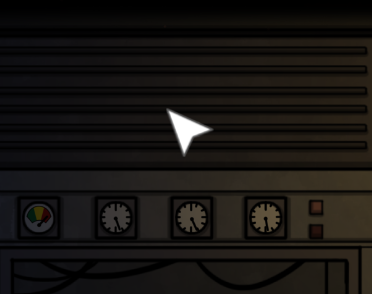
The context cursor is a mouse pointer that changes to help imply how an object or character can be interacted with. This gives Endora’s Box an immediately understandable interface that really needs no text explanation. The main concept behind this system is, of course, affordance. Each cursor was carefully designed to afford the context of the player’s click before they’ve decided to click.
The tricky part of this system was deciding how to simplify all possible interactions in the game into just a few recognizable symbols. The key was to combine mechanically different, but conceptually similar actions together under the same cursor symbol. The Magnifying glass cursor for example means, broadly, ‘to inspect’. Within the game this can either bring up the dialog box to provide a narrative inspection of the item, or it could pop up a zoomed in view of the scene which provides more interaction options.
Here are the six cursors and their purposes:
– Default Cursor (indicates when no interactions are available under your cursor position)
– Pointer Hand (touching / collecting items in the game world)
–Speech Bubble (talking to characters)
–Magnifying Glass (pops up a zoomed in view of a scene or gives dialog about the inspection of the object)
–Item (when dragging an item from inventory, your cursor becomes the item)1
–Speech Bubble embedded with item (when dragging an item over a character, show / give this character the held item)


This careful and consistent system allows me to not only simplify the interface, but also hide secret content in plain sight, without having it be immediately obvious, but also without having it be unintuitively hidden. Here for example, I have a row of singing, wall mounted bass. One of them is actually a secret, sentient character named “Basstion” who will give you a side quest if you notice that your mouse turns to a speech bubble when hovering over him. Since he is visually identical to the other fish, he would likely only be accidentally discovered without the context cursor.